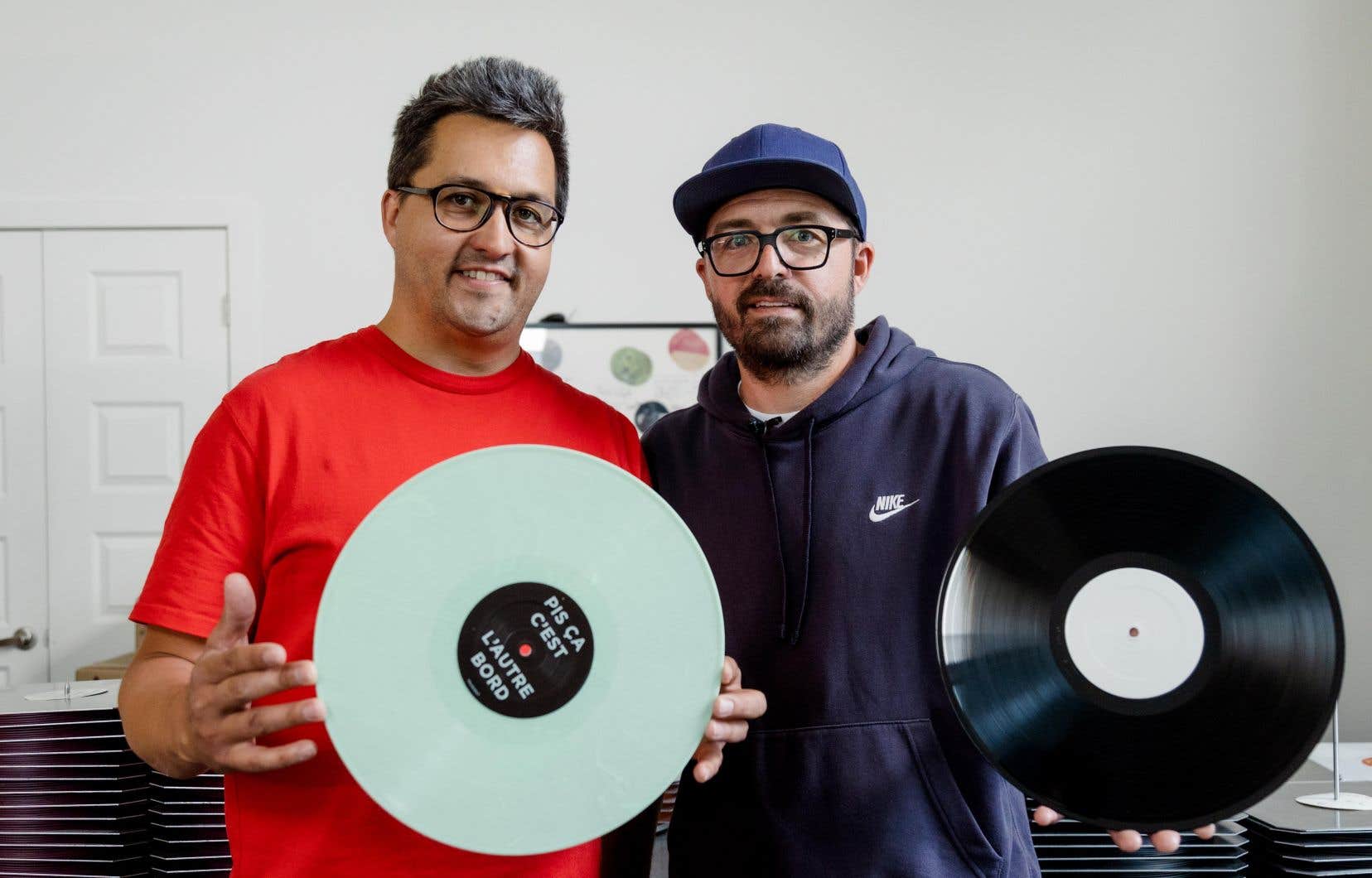Since its triumphant return in the 2000s, the vinyl record has enjoyed unfading popularity. To discover the secrets of this invention which is celebrating its 75th birthday this year, The duty went to meet the owners of Vinylist, the only LP pressing plant in Quebec.
It cracks, it blows and it smells of melted plastic in the small industrial premises on boulevard Wilfrid-Hamel, in Quebec. On one side, a pile of boxes filled with vinyl records is patiently waiting to be sent to the United States; on the other, a mountain of bags of PVC (polyvinyl chloride) marbles in various colors is strewn on the ground. At the back of the room, we find the heavy artillery: an automatic press from Toronto, the value of which is close to 400,000 dollars.
She is the one who gave life to the vinyl records of Cowboys Fringants, Louis-Jean Cormier, Klô Pelgag, Alexandra Stréliski and many other artists in the last four years.
At first glance, its operation seems simple as hell: in less than a minute, the machine melts the plastic balls, which are transformed into a pressed cake, then cut meticulously by a mechanical arm. The final result ? A 33 rpm disc ready to listen.
But in fact, the learning curve was rather difficult for the owners of the Vinylist, the brothers Pierre-Luc and Dominic Savard. When they started in 2019, the two music enthusiasts no longer even counted the hours devoted to taming the machine.
“It sounds pretty sexy, doing vinyl, but it’s a complex thing. It takes time to find the right configuration to get a good sound. It also takes several tries to get the right color. […] And there are always problems that arise. You don’t start a vinyl pressing company without some knowledge of electricity, pneumatics and plumbing,” explains Pierre-Luc Savard. According to him, a year and a half is needed to learn how to use a press independently.
Respond to the request
Today, after the break-in period, the company is running at full speed and now has six full-time and three part-time employees. Considering that the automatic press can produce up to 1,000 discs per 8-hour cycle, The Vinylist has manufactured a total of 150,000 discs in 2022. This year, he would like to aim for 200,000.
“That seems like a lot, but it’s not enough. […] Currently, the demand is very strong. Since our opening in 2019, it has not stopped growing. Our notebook for 2023 is practically booked in full,” says Pierre-Luc Savard.
His company has also recently recovered some contracts from the Société des loisirs, a company which has also been pressing vinyl records in Quebec since 2021, but which declared bankruptcy last month. “It gives a boost additional to future projects”, he adds, not hiding his ambition to grow his business.
On average, artists who contact the Vinylist have to wait four months before receiving their LPs. It is rather the norm in the middle, assures the co-owner, and it is almost half as much as in 2021.
This year, the singer Adele cracked the LP pressing industry by ordering 500,000 copies of his album 30. Pierre-Luc Savard says that several artists and record companies from the United States then knocked on his door, despite the higher cost of the order due to shipping costs to another country. “No matter the price, they were calling everywhere to see who could get them their vinyl in time for their launch. »
The Vinylist has kept several of these American clients, but 80% of its order book is made up of Quebec artists. “We have big names, but we also work with a lot of independent artists. We accept orders from 200 discs. For example, our biggest project was 16,000 discs for an American customer. »
A strong trend
Is he worried about a new disinterest in vinyl, as was the case in the 1990s? Not at all. He also refuses to talk about a fad, believing that vinyl is here to stay.
He recalls that for the first time since 1987, vinyl sales exceeded those of CDs in the United States in 2022, with 41 million vinyls sold against 33,000 CDs. As for online music, it already ranks first in terms of music sales. Despite everything, the vinyl industry is doing very well today.
“Vinyl speaks a lot to those who knew it in their youth, there is a form of nostalgia with that. […] But it attracts a lot of younger generations, too. For them, it is as if it were a new object. It’s a beautiful collector’s item and which, in addition, has a completely different sound quality from a digital copy,” emphasizes Pierre-Luc Savard.
And the music industry is not insensitive to this phenomenon. “Artists, producers, record labels, the whole industry is betting on it. »
“Obviously we don’t know what the future holds. Maybe in 20 years it will be something else. Maybe we’ll even be back on tape. I don’t want it, but you never know, ”he laughs, without really believing it himself.
